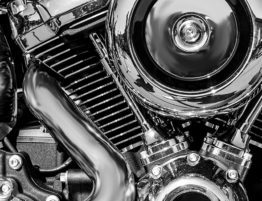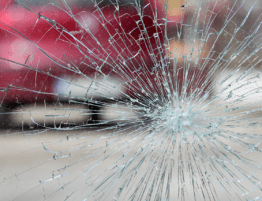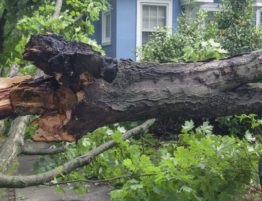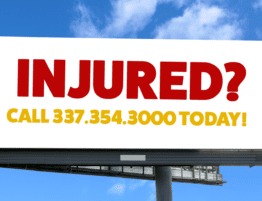
- Remove any unwanted objects in your vehicle and store them in your trunk.
- Ensure the top of the headrest is the same height as the top of your head to help minimize movement.
- Always buckle up regardless of the distance you’re driving.
- Pay attention to what is happening around you while driving and ensure there is adequate space around your vehicle.
- During an accident, try not to panic. Instead, weigh your available options, like opportunities to steer away or an empty lane for you to move over.
- Do your best avoid head-on collisions when striking an object, as they are more likely to end in fatalities.
Your first instinct as a driver is to avoid accidents at all costs. Unfortunately, some are just unavoidable. Car accidents are one of the highest contributors to fatalities not only in the US but in the world as well.
When the unthinkable happens, what you do can mean the difference between life and death. The way you react may minimize damages to yourself and your vehicle but it can amplify it tenfold if you’re not careful. While there are no absolute guarantees during a car accident, here’s our advice for reducing the damage to your vehicle—but most importantly yourself.
Safety Precautions That May Help Minimize Damage
We all hope that car accidents won’t happen in the first place. However, it’s important to prepare for the worst even as you hope for the best. These are some of the precautions that you can take before getting behind the wheel.
De-Clutter Your Car
Remove any unwanted objects in your vehicle and store them in your trunk. They may seem harmless for now but can fly around during an accident and cause lasting injuries. However, try not to store heavy objects in the trunk because they can forcefully slide towards passengers and cause injuries after a massive impact. Make sure to tether heavy objects down if they’re going to remain in your trunk.
Proper Headrest
When another car hits you from behind, your head will suddenly jerk forward and then backward (whiplash), leading to neck and head injuries. Ensure the top of the headrest is the same height as the top of your head to help minimize movement. Additionally, always maintain a space of at least ten inches between your chest and the steering wheel to avoid injury from the discharged airbag.
Always Wear Your Seatbelt
Always buckle up regardless of the distance you’re driving. Statistics indicate that wearing a seatbelt reduces the chances of acquiring fatal injuries by 50% for front seat passengers and 75% for passengers sitting in the backseat. The law requires that you always wear a seatbelt for a reason and you won’t have enough time to reach for it during a crash. It might feel uncomfortable or inconvenient when running short errands, but it’s better to be inconvenienced than injured.
Always Have a Way Out
Pay attention to what is happening around you while driving and ensure there is adequate space around your vehicle. Most importantly, always have “an out” in case there’s trouble ahead. For example, what would happen if the car in front of you rams into the car in front of it? What maneuvers would you make to avoid being part of the accident?
Steering away from a collision is better than driving into it, but it can be difficult—especially during heavy traffic. You should always maintain enough space between you and other vehicles as an additional defensive driving measure.
What You Should and Shouldn’t Do During an Accident
Don’t Panic
The last thing you should do during a crash is panic. After sensing imminent danger, most people tend to freeze and feel helpless. Others make grave errors in the moment of panic that may do more harm than good.
If you are attentive, you may be able to respond quickly and minimize the damage. Weigh your available options, like opportunities to steer away or an empty lane for you to move over. These split seconds can be the difference between heavy and light damages.
Hit the brakes
Release the gas pedal and push hard into the brakes. It will brace your body for impact but also prevent your car from rolling forward and colliding with the cars in front of you, or even moving into an intersection and causing yet another collision.
Swerve right
Ramming into the vehicle in front of you or into a tree, bridge or any other immovable object is the worst thing that could happen. Swerve the car to your right to avoid such collisions. If you veer to the left, you might collide with oncoming traffic.
Avoid Head-On Collisions
Do your best avoid head-on collisions when striking an object, as they are more likely to end in fatalities. If you must hit an object or another vehicle, make sure to use a glancing blow (hit it at an angle). In this case, the car is more likely to bounce off with minor damages.
If you are about to ram into something, quickly adjust your speed and steer the vehicle such that you get hit at the rear wheels or behind them. It will reduce the impact and allow the car to spin around rather than taking in the force from the other vehicle.
What to Do After an Accident?
After taking all the necessary precautions and measures to lessen the damage after such an unfortunate incident, you still have to deal with the aftermath of the crash. You should do the following immediately after a car accident.
- Take a deep breath and keep calm.
- Call the authorities as soon as possible
- Assess the impact
- Assess for injuries
- If the damages are only minor, move the car safely away from the traffic
- If the vehicle can’t move, wait for help
- Warn other drivers by turning on the hazard lights and setting out cones if you have them
Every accident is unique and it’s difficult to predict how you’ll act when it happens. However, it may be possible to lessen the extent of the damage to you and your vehicle by following the tips we have outlined above. Remember every minute counts—what you do within the few minutes you get can either help or harm you.










